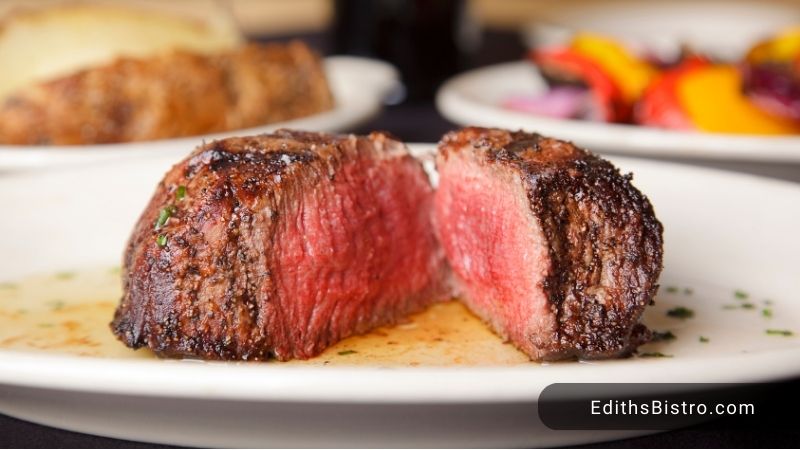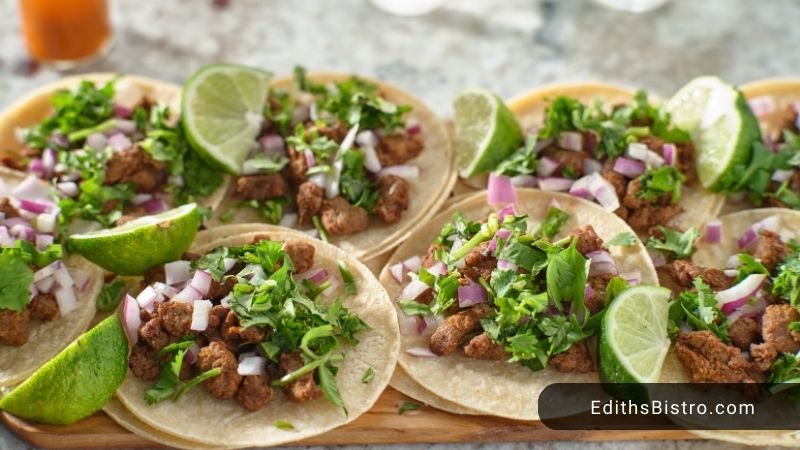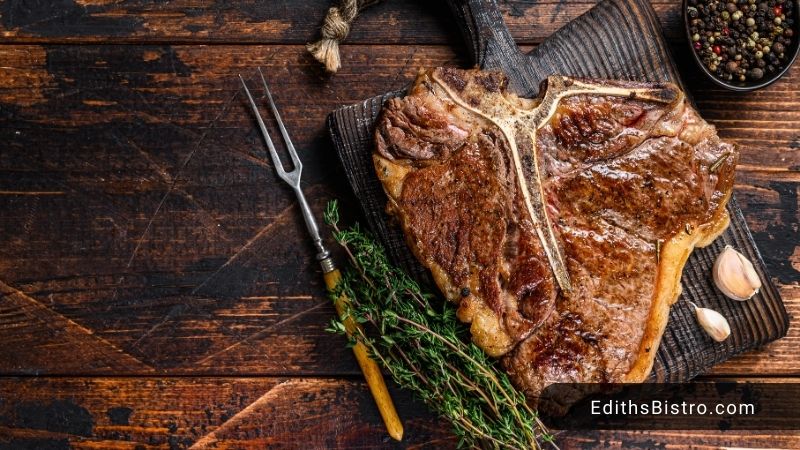Eating with braces can be challenging, especially for certain foods like steak. Many wonder if enjoying a juicy steak while undergoing orthodontic treatment is possible.
The good news is that you can still eat this delicious meal with a few precautions. In this article, let’s explore whether you can eat steak with braces and some tips for ensuring a delicious experience!
Can You Eat Steak With Braces?
Yes, you can eat steak with braces. However, it is essential to be cautious and follow some guidelines for a pleasant dining experience. Steak can be tough to chew, which may pose challenges for braces wearers if not approached carefully.
Can you eat a soft steak with braces?

Yes, you can enjoy tender steak with braces, which tends to be a more suitable choice compared to tougher cuts. There are several cuts of steak that are naturally soft and easy to chew, making them suitable options for those with braces:
- Filet Mignon: Often considered the king of tenderness, filet mignon is exceptionally soft due to its minimal connective tissue and marbling. It’s a top choice for those seeking a steak that melts in the mouth.
- Tenderloin: Also known as “eye filet” in some regions, the tenderloin is another incredibly tender cut. It’s lean, devoid of excessive connective tissue, and offers an easy-to-cut and chewy texture.
- Sirloin: Although not as tender as filet mignon or tenderloin, sirloin steaks still provide a soft and flavorful dining experience. They strike a balance between tenderness and a robust beefy taste.
- New York Strip: New York strip steaks offer a harmonious blend of tenderness and flavor. They contain less fat than ribeyes but are still tender enough for an enjoyable meal.
- Flat Iron: Flat iron steak, sourced from the cow’s shoulder area, might surprise you with its tenderness when prepared correctly. It’s an excellent choice for a flavorful yet soft steak.
Can you eat steak tacos with braces?

Certainly, you can eat steak tacos while wearing braces, but it’s vital to adopt some precautions to ensure a comfortable dining experience. Here are some tips for savoring steak tacos with braces:
- Choose tender cuts: Opt for steak cuts that are naturally tender and easy to chew, such as filet mignon, tenderloin, or sirloin.
- Request thin slices: If the steak in your tacos is thick or particularly tough, ask for it to be thinly sliced. Thinner slices make it easier to bite into and lessen the chance of dislodging braces or causing discomfort.
- Ideal level of doneness: Overcooked steak or even well-done steak can become tougher, so communicate your preference to the chef if you like it medium-rare or medium.
- Trim excess fat and gristle: Before assembling your tacos, trim any excess fat and gristle from the steak. This will make it easier to chew and decrease the chance of food getting stuck in your braces.
- Warm tortillas: Soft and warm tortillas are more pliable and easier to bite into than crunchy tortillas.
- Cut ingredients into small pieces: Lettuce, tomatoes, or other taco toppings; cut them into small, bite-sized pieces to make them easier to manage with braces.
What cuts of steak should you avoid eating with braces?

When you have braces, it’s advisable to avoid tough cuts of steak that require excessive chewing. Here are some cuts to steer clear of while wearing braces:
- Ribeye Steak: While delicious, ribeye steaks are known for their marbling and pockets of fat, which can be difficult to chew and may pose a challenge for those with braces.
- T-Bone Steak: The T-shaped bone in a cooked T-bone steak can make it difficult to extract tender meat. This cut can be less convenient when you’re wearing braces.
- Porterhouse Steak: Similar to T-bone steaks, porterhouse steaks have a large bone in the middle, making it tricky to access the meat around them.
- Flank Steak: Though lean, flank steak is often tough and requires thorough chewing, which can be problematic with braces.
- Skirt Steak: Skirt steak is flavorful but can be quite tough, which may not be ideal for those with braces.
- Chuck Steak: Chuck steaks come from the shoulder area and may contain connective tissue and gristle, making them less suitable for braces wearers.
- Hanger Steak: Hanger steak has a unique texture and can be fibrous, which might pose difficulties for those with braces.
How To Eat Steak With Braces?

Eating steak during braces treatment can be challenging, but with the right approach, you can enjoy this delicious meal without causing any issues for your braces. Here’s a step-by-step guide on how to eat steak with braces:
- Choose the right cuts of steak: Begin by choosing a tender cut of steak instead of tough cuts like chuck steak or flank steak.
- Cut into small pieces: Once your steak is served, use a knife to cut it into small, manageable pieces. Smaller portions are less likely to get stuck in your braces, making chewing more comfortable.
- Chew slowly and deliberately: Take your time when chewing. Avoid rushing through your meal. Chew each bite slowly and thoroughly to minimize the pressure on your braces.
- Practice gentle biting: Instead of biting into the steak with force, use a gentle sawing motion with your teeth to break it down. This method is gentler on your braces and reduces the likelihood of discomfort.
- Take smaller bites: Resist the urge to take large, oversized bites. Smaller, more manageable bites make the chewing process easier and more comfortable.
- Rinse afterwards: After enjoying your steak, rinse your mouth thoroughly with water or mouthwash. Using a water toothpick is recommended.
- Carry dental supplies: Consider carrying a travel toothbrush, dental floss, and orthodontic wax, especially when dining out. These items can assist in maintaining your oral hygiene and addressing any braces-related discomfort.
- Consult Your Orthodontist: If you have concerns or questions about specific foods or eating techniques with braces, don’t hesitate to consult your orthodontist. They can provide personalized guidance to ensure your orthodontic treatment stays on track.
FAQs
Is steak good to eat with braces?
It is possible but not good. Eating steak with braces has to follow strict considerations to ensure a comfortable eating experience. Even when you carefully follow these rules, there is still the potential of food getting stuck or oral hygiene challenges.
Can I eat meat on the first day of braces?
Generally, it is advisable to avoid tough, chewy, and sticky foods, including meat, on the first day after getting braces. When braces are first placed, your teeth and gums may be sensitive, and it can take some time to adjust to the new appliances. Thus, soft foods such as smoothies will be the best way to go.
What meat can you eat with braces?
When you have braces, choosing softer, tender, and boneless meats that are easy to chew is best. Some recommendations are fish, turkey, meatloaf, and ground meat.
References:
- Wikipedia – Dental braces – https://en.wikipedia.org/wiki/Dental_braces






![What To Pair With Quiche? 25+ Best Dishes [With Pictures]](https://www.edithsbistro.com/wp-content/uploads/2024/04/what-to-pair-with-quiche-160x90.jpg)
